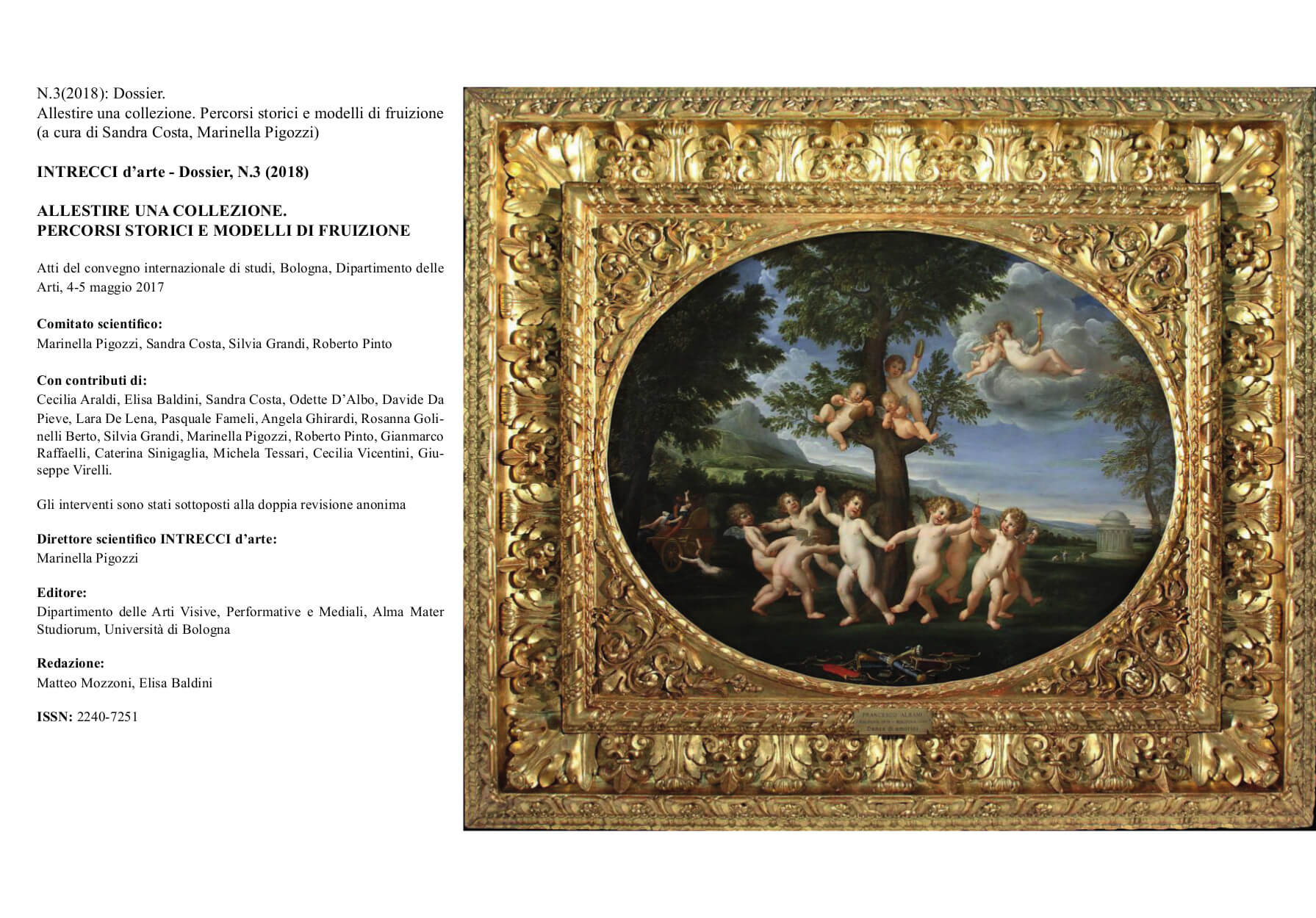Itineraries in the Ancien Régime: the reasons behind the ‘invisible collections’
DOI:
https://doi.org/10.6092/issn.2240-7251/8246Keywords:
collecting, display, museology, 18th centuryAbstract
Already in the period of the Ancien Régime, setting up an exhibition meant to choose between what to display of one’s own collections and where to exhibit it; it also meant to choose the public for whom and the ways in which the collections would be visible, according on aesthetic and collecting options, as well as social and political ones.
This essay focuses on what may be called the ‘display of the invisible’: that is to say, all the interventions wisely done in order to filter the public or to filter the vision of some genres or of specific artworks within collections.
While only people with certain social and cultural characteristics were allowed access to aristocratic collections, visits of the very same collections were organized in different ways and in different times, according to visitors’ prestige and authority. For this reason, some filters used in museums to ‘organize the gallery’ are worth mentioning, such as the so-called stipi, a kind of cases containing the most fragile or the most valuable artworks, and the curtains – being them opened or closed, functioning as a separation modifying contextual relations between artworks. Curtains can equally be interpreted as a means used by curators to structure and to organise visitors’ sensations and judgements.
The 18th century-debate also concerned lacking exhibition of contemporary art to the public; consequently, this became an issue directly connected to the ‘modernity’ of artistic production. In the Age of Enlightenment, invisible collections and perceptively unavailable collections started to be considered as an ethical damage to the whole Nation.
Downloads
Published
How to Cite
Issue
Section
License
Copyright (c) 2018 Sandra Costa
The copyrights of all the texts on this journal belong to the respective authors without restrictions.
This journal is licensed under a Creative Commons Attribution 4.0 International License (full legal code).
See also our Open Access Policy.
Images and photographs may have different terms of license.
In making material available online the Journal acts in good faith. Parties who have questions or who wish to contest the use of specific works may contact the Editor in chief.
Metadata
All the metadata of the published material is released in the public domain and may be used by anyone free of charge. This includes references.
Metadata — including references — may be re-used in any medium without prior permission for both not-for-profit and for-profit purposes. We kindly ask users to provide a link to the original metadata record.






